
The Streckenfernsprecher OB33, or OB33 tragbar (portable) was a Siemens development of the early 30ies. Manufactured by differente providers. Main use has been as railroad trackman telephone (Streckenfernsprecher), maybe also used by PTT linemen and army line building. There is also a German local battery desk telephone named OB33 used by German PTT and railroad.
The OB33 is mechanically and electrically similar to the German Wehrmacht Feldfernsprecher 33. It's construction is overall a little cheaper. One difference is the use of a 4.5V flashlight type flat battery (providing typically less than 2Ah capacity) instead of the 1,5V T30 army field telephone type dry element (30Ah capacity). The lower price and more practical format made the 4,5V battery for sure more attractive for a civil use case where long shelf life and high capacity (and higher cost) of the T30 type elements was not required. Another difference is the line plug with screw on lid mounted to the instrument side (instead of the patchcord plugs on the front of the FF33). Another interesting difference is the "always on" ringer. With the FF33 the local ringer is shortened and does not ring when cranking (not if the linetest button is pressed). In the OB33 the ringer is always connected to the line and does always also ring cranking. Railroad LB telephone lines were party lines where all instruments at every station and at certain locations on the line (e.g. crossings) where connected in parallel. The instruments at stations would be some type of LB wall or desk telephone, e.g. the above mentioned OB33 desk version. The portable instruments were used for trackman or line construction work and connected anywhere on the line in parallel to all other instruments on the line. To signal which endpoint to reach a morse type code of short and long rings was used and therefore it was useful to hear it's own ring signal for control (see also the Swiss trackman telephone). For the same party line reason also the ringer is of high sensitivity (a lot of windings) to activate already on low currents.
The bakelite handset corresponds to the german PTT type 1928 design. The lever in the handset has to be pushed for talking AND listening. Again the reason is the party line setup, if RX on all parallel instruments would be always on the current per instrument would be very low and generate a very low volume audio output only.
The OB33 was provided with leather, wood or bakelite cases. Apparently after WWII also old FF33 bakelite cases would be used for refurbished OB33, and also complete FF33 would be refurbished to be used as OB33 (adding the external connector and adapting for use of the 4,5V battery).
Description from Siemens & Halske catalog F-Sammelliste 1939 (translated to english):
Reichsbahn model OB 33 for OB operation with flashlight battery, with removable shoulder strap, handset with handle switch, ringing inductor with removable crank, AC alarm clock 6000 Ohm, with plug-in connection that is accessible from the outside and protected by a screw cap, and for cable connection to cord clamps on the inside,
..... in oak box: RM 150.- (5.2kg)
..... in leather: bag RM 132.- (4.2kg)
I have three OB33 in three different cases in my collection, a Telefonbau & Normalzeit in a wooden case from 1941, a Siemens & Halske in a leather bag and a Siemens Apparatebau in a bakelite case both from 1939.

Only a wiring diagram is supplied inside the lid of the instruments (see pictures down below).
The selfmade electrical diagram gives a better functionality overview.
The ringer is always connected.
When cranking the magneto the telephone circuit is disconnected.
The 0.5uF capacitor blocks the low frequency (~18Hz) ring current in case any other station rings the line when the user is listening (handset talk & listen lever pressed).
The handset talk & listen lever has to be pressed for talking and listening (in contrast to the typical field telephone setup where TX is always connected and the P.T.T. lever/button needs to be activated only for talking).
The telephone circuit is of anti-sidetone type.
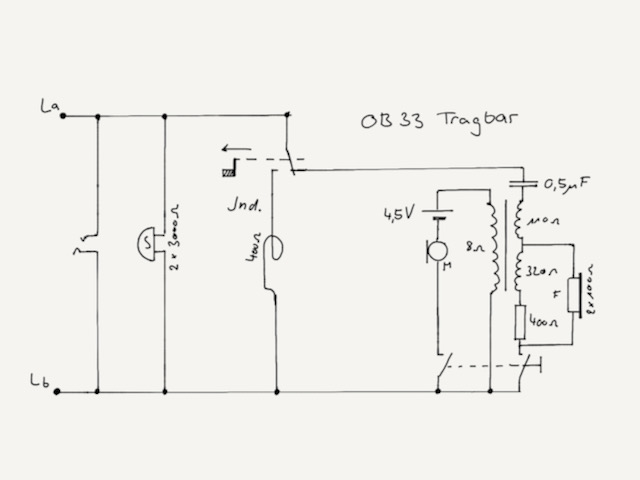
The T&N OB33 disassembled.
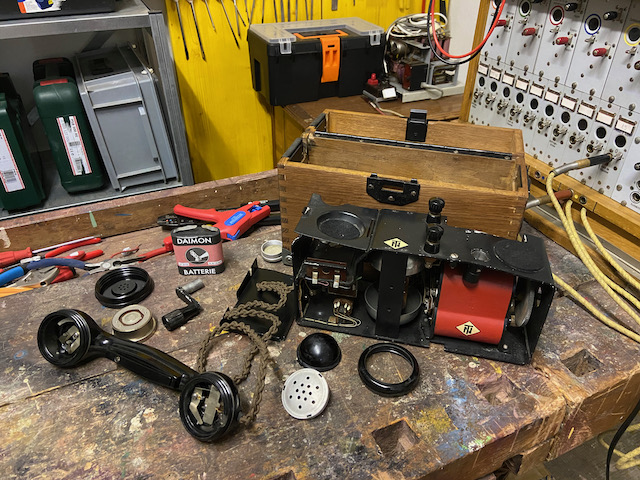
Magneto seems identical to the FF33 type.
Ringer setup very similar.
To the left below the battery compartment the railroad type plug, the capacitor (0,5uF) and the coil (three windings plus a bifilar winding to form a dc impedance for a anti-sidetone setup).
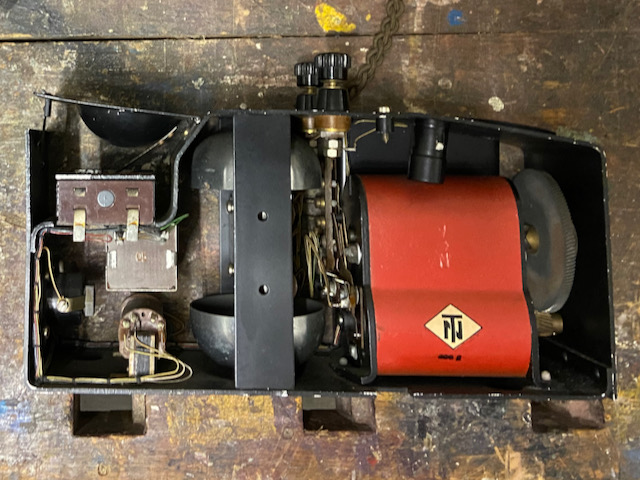
Handset connected fix.
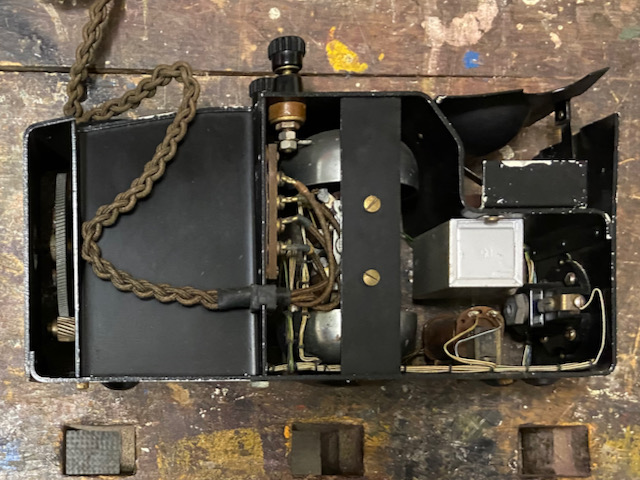
The two pole railroad type connection socket.

The bakelite handset similar in form to the german PTT/Siemens type 1928.
The TX capsule is made by T&N, 2x 100Ohm, no datecode.
The RX capsule is made by C. Lorenz, dated 4.40.
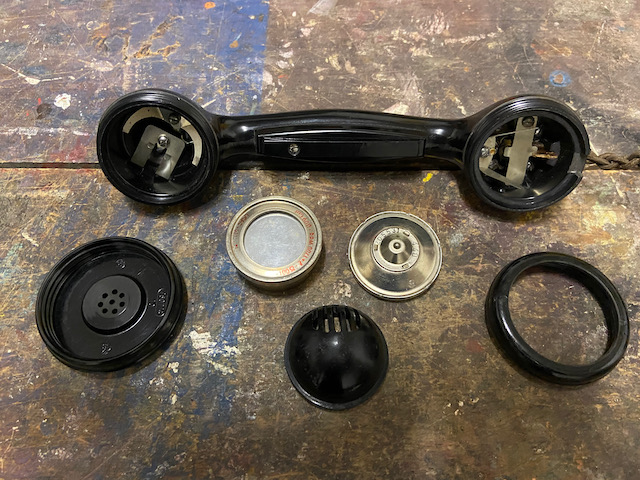
Most fittings are identical to the FF33.
The wiring diagram in the lid is a selfmade reproduction.
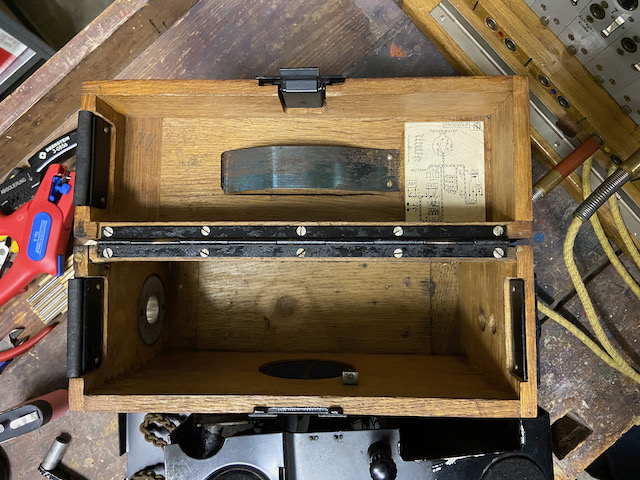
4,5V battery (self made repro) installed.

T&N from 1941, ready to use.
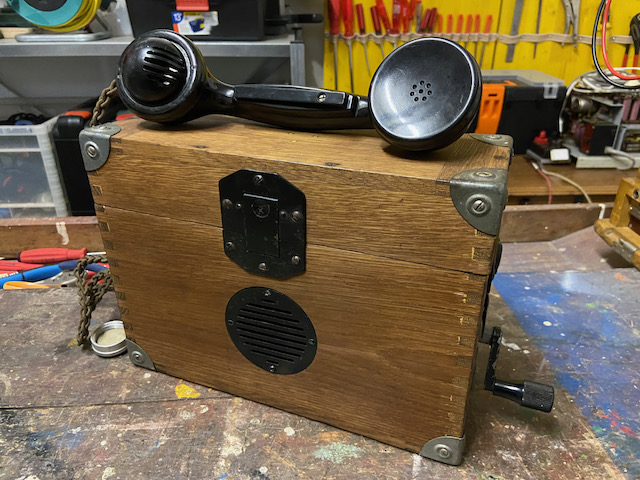
Railroad type socket with open lid.
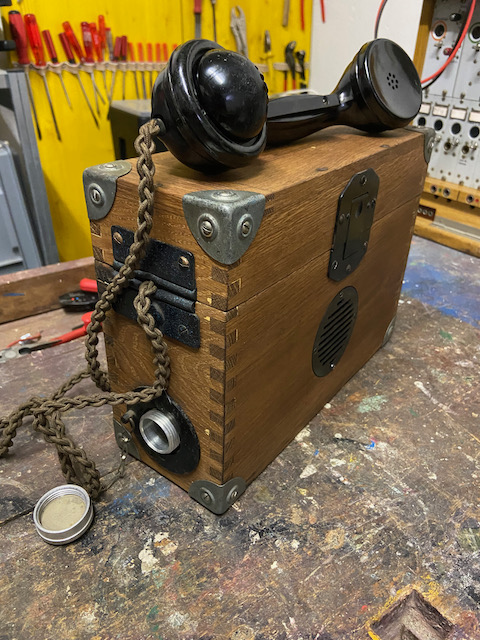
Magneto crank handle mounted.
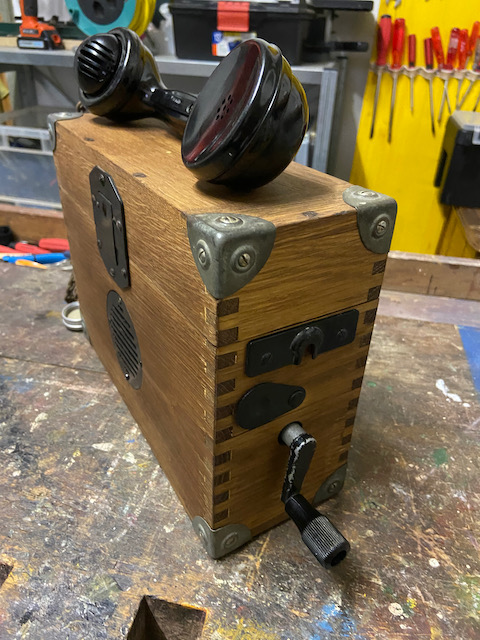
All stored.
T&N logo on body top.
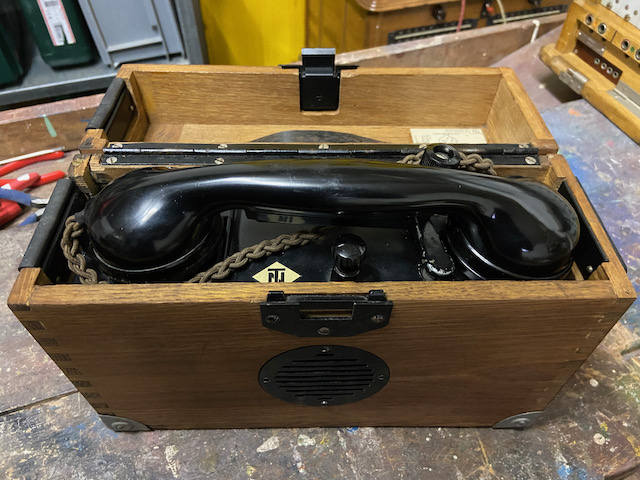
T&N from 1941, ready for transport.

S&H from 1939, ready to use.
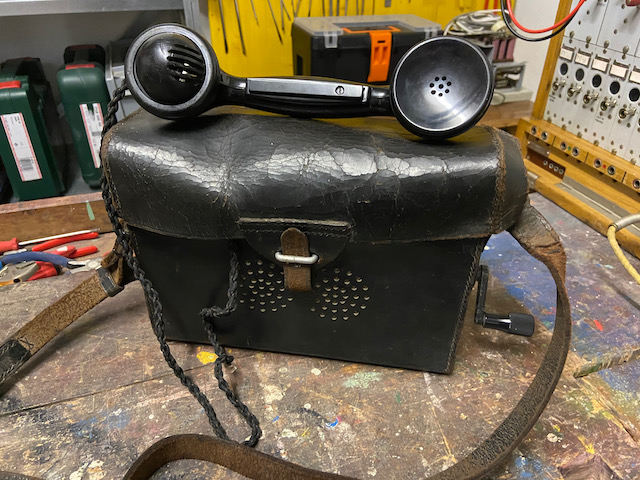
All stored.
S&H logo on body top.

S&H from 1939, ready for transport.
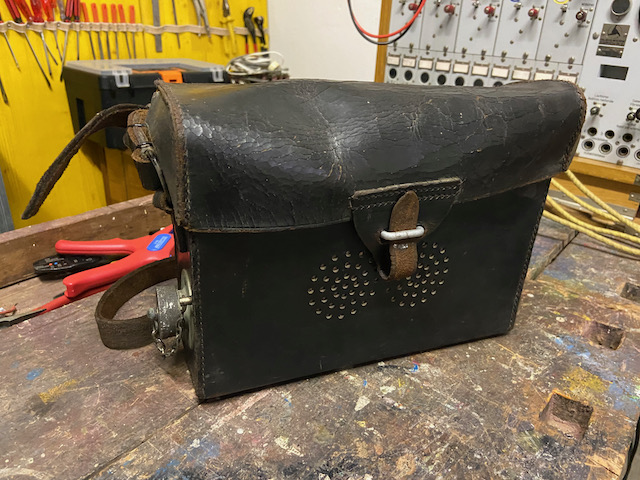
Siemens Apparatebau from 1939 open, still looking for a handset for that one.
Unfortunately also the logo has been removed.
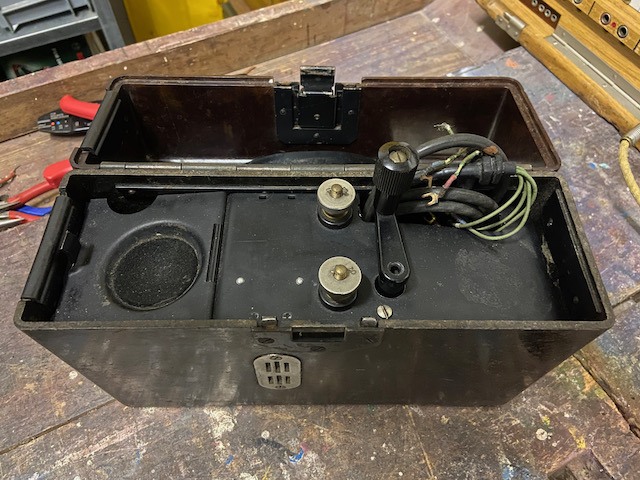
Siemens Apparatebau from 1939, ready for transport.
Bakelite case very similar to FF33.

A wiring diagram is mounted inside the lid.
The T&N diagram is a self made repro, the others are original.
All three are essentially the same.
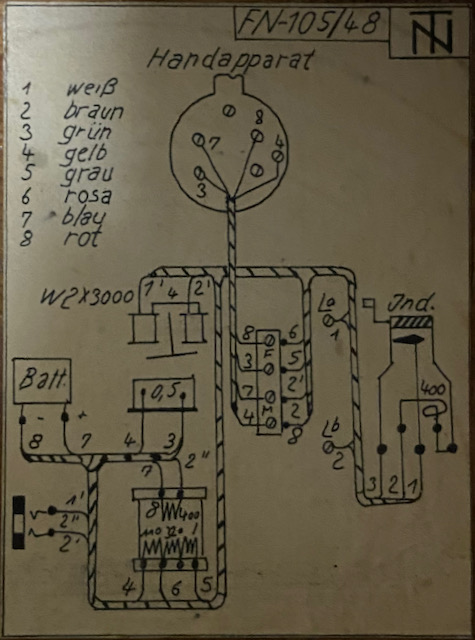
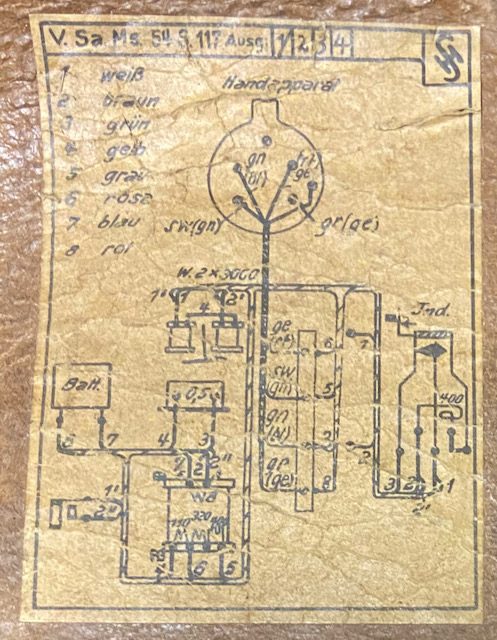
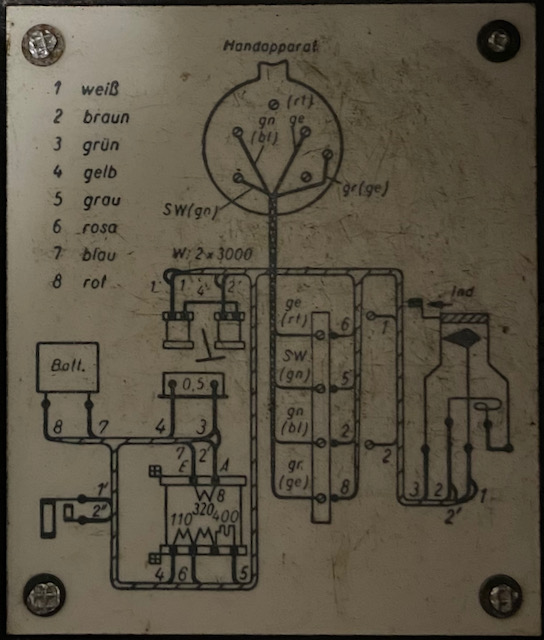
Creative Commons Attribution-ShareAlike 4.0 International License